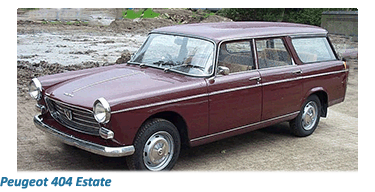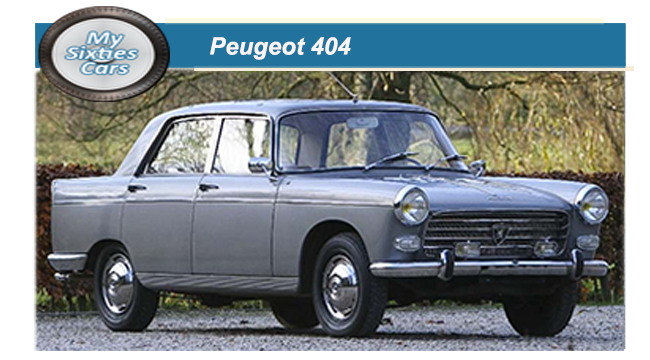 Released in the first weeks of the Sixties, the Peugeot 404 raised a lot of eyebrows, not as a result of its sweeping design, but because of its remarkable resemblance to another Pininfarina design, saloon cars produced in the UK by auto giants BMC.
Released in the first weeks of the Sixties, the Peugeot 404 raised a lot of eyebrows, not as a result of its sweeping design, but because of its remarkable resemblance to another Pininfarina design, saloon cars produced in the UK by auto giants BMC.
T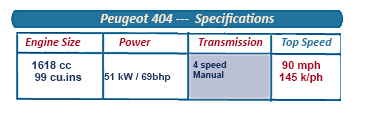 he Austin Cambridge/Morris Oxford saloon and station wagon combination were also styled by the Italian design house and were almost identical to the 404.
he Austin Cambridge/Morris Oxford saloon and station wagon combination were also styled by the Italian design house and were almost identical to the 404.
It was a sign of the times that the “cout de estante” between BMC and Peugeot coupled with nearly total dependence on Pininfarina that the two auto giant refused to make an issue of the almost flagrant breach of business ethics, putting their new model into production without a further word being said.
>The furore around the design rapidly petered out, and the French public was soon drawn to the 404, an elegant and well-finished machine, with compliant handling thanks to its independent front suspension and sharp, well-weighted steering.
>Soon Peugeot released coupe and cabriolet versions of the 404, although these looked entirely different from the saloon and were available only with the 1.6-litre (98 cu in) engine, with or without fuel injection.
![]()
Entry-level models came with the 403's 1.5-litre (90 cu in) engine, although a new 1.6-litre (98 cu in) model, based on the old unit, was also offered with a lively 85bhp on tap. S
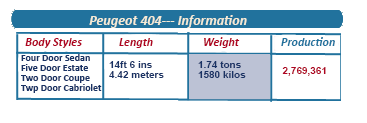 ome petrol driven 404’s were fitted with fuel injection engines, pushing the power output up to a class-leading 96bhp, enough to provide the 404 with a genuine 160km/h (100mph) cruising ability.
ome petrol driven 404’s were fitted with fuel injection engines, pushing the power output up to a class-leading 96bhp, enough to provide the 404 with a genuine 160km/h (100mph) cruising ability.
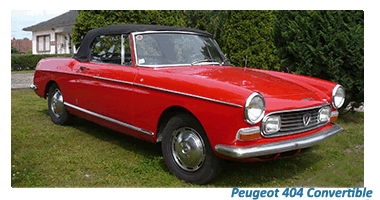 As was the case with its predecessor, the 403, Peugeot offered simple estate versions, as well as an eight-seater Familiare model.
Those who were prepared to sacrifice performance for fuel economy could settle for a 2-litre, 122 cu in diesel engined 404 capable of generating just 53 bhp.
As was the case with its predecessor, the 403, Peugeot offered simple estate versions, as well as an eight-seater Familiare model.
Those who were prepared to sacrifice performance for fuel economy could settle for a 2-litre, 122 cu in diesel engined 404 capable of generating just 53 bhp.
![]()
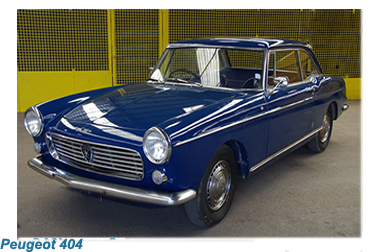 The Familiare, as well as the 404 sedan, proved to be very popular as taxicabs, not only in France but also across Western Europe, Africa, and as far as the Middle East.
Peugeot's total global output for the 404 had reached more than two and a half million when the model was taken out of production in 1975.
A testament to the model’s versatility and durability was that more than two decades later, Peugeot 404s could still be seen at work daily.
The Familiare, as well as the 404 sedan, proved to be very popular as taxicabs, not only in France but also across Western Europe, Africa, and as far as the Middle East.
Peugeot's total global output for the 404 had reached more than two and a half million when the model was taken out of production in 1975.
A testament to the model’s versatility and durability was that more than two decades later, Peugeot 404s could still be seen at work daily.
